Arts & Entertainment
Netflix revisits ‘The Trials of Gabriel Fernandez’ in harrowing but essential docuseries
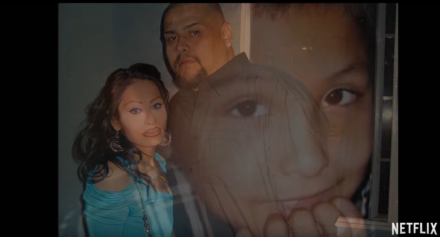
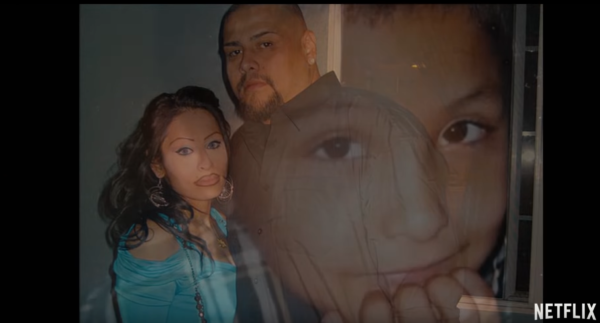
The name of Gabriel Fernandez still hangs heavy over the City of Los Angeles.
From the day the 8-year-old was found by Fire Department personnel on the floor of his Palmdale home after they responded to a 911 call from his mother, his story loomed large in the daily news. The paramedics had found Gabriel badly bruised and unresponsive, with profound injuries – broken ribs, a cracked skull, missing teeth, burnt skin, and BB bullets imbedded in his lungs and groin – that didn’t fit with the explanation they had been given for his condition. His mother, Pearl Sinthia Fernandez, and her boyfriend, Isauro Aguirre, claimed the boy had been injured by falling over a dresser and hitting his head. Gabriel was pronounced brain dead at the hospital on that same day, May 22, 2013; he was taken off life support and passed away two days later.
That tragic incident was the beginning of a seven-year ordeal for Gabriel’s family, his community, and the city itself. The child had been the victim of horrific and systematic abuse, perpetrated by his mother and Aguirre and allegedly motivated at least partly by Aguirre’s belief that the boy was gay; worse yet, other family members, as well as Gabriel’s teacher, had notified Children and Family Services multiple times over concerns that he was being mistreated, yet social workers had found, in every case but one, that their reports were unfounded – despite what seemed in retrospect to be clear indications to the contrary.
Fernandez and Aguirre were charged with first-degree murder in the death of Gabriel, with a special circumstance for torture, and in an unprecedented move, county prosecutors also charged four county social workers with one felony count each of child abuse and falsifying records.
The case dominated headlines as the ensuing investigation and court proceedings revealed ever more disturbing details about Gabriel’s short life and cruel death. The prosecution sought the death penalty for both of the perpetrators, who admitted to killing the child but claimed it had not been a pre-meditated act. Finally, in 2018, Aguirre was found guilty of the first degree changes and sentenced to death; Fernandez avoided the death penalty by agreeing to plead guilty.
In January of 2020, the charges against the four social workers were thrown out by a three-justice panel of the 2nd District Court of Appeal.
Now, Netflix is set to unveil “The Trials of Gabriel Fernandez,” a six-part docuseries which examines the case as it was laid out by LA County prosecutors, as well as chronicling journalistic efforts to track the weaknesses within the government agencies devoted to children’s welfare that permitted such a heartbreaking act to take place. Directed by documentarian Brian Knappenberger (“Nobody Speak: Trials of the Free Press”), it’s a gripping (and grim) deep dive into the case that may well be the most intense and upsetting true crime series the streaming network has produced so far.
Casting lead prosecutor Jon Hatami in the role of avenging hero, Knappenberger’s chronicle of the court case carefully avoids straying into sensationalism without shying away from the gruesome facts of Gabriel’s life. Through trial footage, interviews, and footage shot specifically for the show, we are given as comprehensive a look at the story as is possible in six hours of television, with the benefit and clarity of hindsight to assist in offering an overarching view of not only what happened, but of the systemic problems that led to a failure by those charged with protecting at-risk children to prevent the worst from happening to Gabriel. Perhaps most effectively, it repeatedly reminds us, through photos, footage, and the words of those who knew him, that Gabriel was a kind, loving, and gentle child who deserved much better treatment at the hands of those who should have been his caretakers.
As for the assertion that homophobia was a factor in Aguirre’s brutal beating and killing of his de-facto stepson, it doesn’t offer a lot of detail – prosecutors chose not to pursue a hate crime charge for strategic reasons, so that angle was only supplemental in proving a case for pre-meditation based solely on factual evidence – but it makes sure we hear about it in both through Hatami’s court statements and from the mouths of family members, who assert that Gabriel had been taken by the couple from his uncle and same-sex partner (previously given custody when his mother “didn’t want him” at birth) because they didn’t approve of a child being raised by gay parents. By all reports, Gabriel experienced the happiest and most supportive environment of his short life when he lived with them.
The Netflix series spends considerable time hammering home the shocking reality of the violence suffered by little Gabriel (described by Los Angeles Judge George G. Lomeli at Aguirre’s sentencing as “horrendous, inhumane and nothing short of evil”), and rightly so; to do anything less would be a disservice to his memory. Once it has done that, however, it sets its sights on the deeply shrouded county bureaucracy of Child and Family Services, the uniquely autonomous and powerful agency that oversees child welfare, and paints perhaps an even more disturbing picture of an organization overworked, understaffed, hamstrung by the financial priorities of privatization, and cloistered in a stubborn veil of secrecy that resisted not just inquiries from the press but from prosecutors as well. It also makes clear that law enforcement officials were well aware of the prior history of reported abuse in the Fernandez home before that fateful day when Gabriel’s life came to an end.
At the same time, Knappenberger takes care to offer a balanced view of the more complex ethical issues at the core of the case. His coverage of the four accused social workers, singled out in the minds of many as scapegoats by county officials looking for a means of damage control, is fair and compassionate, offering a glimpse at the daunting pressure and moral quandaries that face such civil servants; that it never quite lets them off the hook for the choices they made in handling Gabriel’s situation before it was too late is more testament to the journalistic integrity to which the series aspires.
Though the case of Gabriel Fernandez made the news nationwide, many outside of Los Angeles itself will likely only have passing familiarity with what happened. With “The Trials of Gabriel Fernandez,” Netflix is ensuring that Gabriel’s heartbreaking story will be known by millions – and while some may be hesitant to watch due to the disturbing nature of its conflict, it’s a show that demands to be seen. It reminds us, in no uncertain terms, that there are monsters in the world; but it also reminds us that for every Isauro Aguirre or Pearl Fernandez, there is also a Jon Hatami – someone who will stand up to fight for justice in the name of those who have suffered at their hands. Perhaps most important, it reminds us there is still much work to be done in perfecting the systems we have in place to serve our children – and that unrelenting, powerful journalism is still the best tool we have for holding those systems accountable.
“The Trials of Gabriel Fernandez” premieres on Wednesday, February 26, on Netflix. You can watch the trailer below.
Egypt
Iran, Egypt object to playing in Seattle World Cup ‘Pride Match’
Game to take place on June 26

Iran and Egypt have objected to playing in a “Pride Match” that will take place in Seattle during the 2026 World Cup.
The Egyptian Football Association on Tuesday said it told FIFA Secretary General Mattias Grafström in a letter that “it categorically rejects holding any activities related to supporting (homosexuality) during the match between the Egyptian national team and Iran, scheduled to be held in Seattle, USA, on June 26, 2026, in the third round of the group stage of the 2026 World Cup.” Football Federation Islamic Republic of Iran President Mehdi Taj told ISNA, a semi-official Iranian news agency that both his country and Egypt “protested this issue.”
The 2026 World Cup will take place in the U.S., Canada, and Mexico. The draw took place at the Kennedy Center on Dec. 5.
Iran is among the handful of countries in which consensual same-sex sexual relations remain punishable by death.
The State Department’s 2023 human rights report notes that while Egyptian law “did not explicitly criminalize consensual same-sex sexual activity, authorities regularly arrested and prosecuted LGBTQI+ persons on charges including ‘debauchery,’ prostitution, and ‘violating family values.’” Egyptian authorities “also reportedly prosecuted LGBTQI+ individuals for ‘misuse of social media.’”
“This resulted in de facto criminalization of same-sex conduct and identity,” notes the report.
The 2024 human rights report the State Department released earlier this year did not include LGBTQ-specific references.
Soccer has ‘unique power to unite people across borders, cultures, and beliefs’
The June 26 match between Iran and Egypt coincides with Seattle Pride. The Washington Post reported the Seattle FIFA World Cup 2026 Local Organizing Committee decided to hold the “Pride Match” before last week’s draw.
“As the Local Organizing Committee, SeattleFWC26’s role is to prepare our city to host the matches and manage the city experience outside of Seattle Stadium,” said SeattleFWC26 Vice President of Communications Hana Tadesse in a statement the committee sent to the Washington Blade on Wednesday. “SeattleFWC26 is moving forward as planned with our community programming outside the stadium during Pride weekend and throughout the tournament, partnering with LGBTQ+ leaders, artists, and business owners to elevate existing Pride celebrations across Washington.”
“Football has a unique power to unite people across borders, cultures, and beliefs,” added Tadeese. “The Pacific Northwest is home to one of the nation’s largest Iranian-American communities, a thriving Egyptian diaspora, and rich communities representing all nations we’re hosting in Seattle. We’re committed to ensuring all residents and visitors experience the warmth, respect, and dignity that defines our region.”
The 2034 World Cup will take place in Saudi Arabia.
Consensual same-sex sexual relations remain punishable by death in the country. The 2022 World Cup took place in neighboring Qatar, despite concerns over the country’s anti-LGBTQ rights record.
Television
‘Heated Rivalry’ is the gay hockey romance you didn’t know you needed
Spoiler alert: It’s not really about hockey

Spoiler Alert: “Heated Rivalry” is not about hockey.
The new limited series, produced for the Canadian streaming service Crave and available in the U.S. on HBO Max, may look from its marketing like a show about hockey. It definitely contains a lot of scenes involving hockey – being played, being watched, being talked about – and the story is surrounded by hockey; its two main characters are professional hockey players, and their competition as opposing hockey champions (the “rivalry” of the title) is a major factor that moves the plot.
Even so, if you’re a hockey fan who knows nothing about it, and you stumble across it while looking for something to watch, be warned before you press “play” that you are probably in for a big surprise.
Adapted from “Game Changers,” a popular book series by Canadian author Rachel Reid, the show follows the two above-mentioned hockey pros – Canadian Shane Hollander (Hudson Williams) and Russian Ilya Rozanov (Connor Storrie), each of whom is a star player for their respective team – as they compete against each other with puffed-up “alpha” swagger, on the ice and in the media. When the skates (and cameras) are off, however, there’s a different story going on. Despite the jocular animosity of their public relationship, there’s something else brewing between them in private, and it comes to a head when a commercial shoot leads to an unexpected rendezvous in a hotel room.
Well, unexpected for them, at least. We in the audience have seen it coming since that first smoldering glance across the rink.
From there, “Heated Rivalries” continues over a course of years as the two secret lovers use every match, tournament, or Winter Olympics where they compete against each other as an opportunity for more rendezvous in more hotel rooms. But while their meetings may be all about a release of pent-up passion, the bond between them is based on something more. In the high-stakes world of professional hockey, there’s not much they can do about that – publicly, at least – without killing their careers; in Ilya’s case, as a Russian citizen and the son of a prominent government official, the situation carries the potential for even graver consequences.
That’s just at the end of the first two episodes, though. The show, which drops an episode weekly through December, leaves us hanging there to explore the story of another hockey player, Scott (François Arnaud), teammate and best friend to Shane, who becomes entangled with smoothie barista Kip (Robbie G.K.) in a whole secret gay life of his own.
If you’re thinking that the idea of a gay love story between two butch hockey players is a preposterous premise for romance fiction, think again – or at least redefine your idea of “preposterous.” It’s a genre that has exploded in popularity among a surprisingly large demographic of romance literature fans who also love hockey, combining the thrill of forbidden love with the drama and excitement of their favorite sport to catapult numerous writers, including Reid, onto the bestseller lists, which was surely a factor in the choice to translate her “Games Changers” books to the screen, courtesy of the show’s queer creator/writer/director Jacob Tierney.
The latter (also co-creator of “Letterkenny,” another popular and queer-friendly Canadian show with a strong hockey presence) delivers it with all the glossy, high-charged passion one would expect – and more – from a romance about world-class athletes in love. Set within the rarified world of wealth and privilege that is professional sports, the drama takes place against a backdrop of packed arenas, awards ceremonies, elegant fundraisers, and luxury hotels, where the protagonists must play at being enemies while secretly planning their next hook-up with each other.
Which brings us to the thing that really makes “Heated Rivalry” the buzziest queer show of late 2025: the sex. The show takes full advantage of its story’s obvious sex appeal – as well as its leading actors’ sculpted, athletic bodies – to serve up some of the hottest onscreen trysts in gay TV memory. Though they stop just short of being “explicit,” they’re the kind of sex scenes that push the limits of “softcore” right to the edge and make sure we know exactly what’s happening, even if we can’t see the details. Tierney turns those steamy private meetings between Shane and Ilya into set pieces and centers entire episodes around them, because he knows they’re what the audience is there for. Like we said, this is not really a show about hockey.
That said, it’s not really just a story about sex, either. In between those steamy scenes of athletic carnality, there’s a lot of percolating emotion happening – and thanks to the exquisitely tuned performances of Williams and Storrie, whose electric chemistry doesn’t just spark during their lovemaking scenes, but crackles through their every moment together on screen, it all comes across with elegant clarity. Shane and Ilya may want each other’s bodies, but there’s something more they want, too. There’s a tenderness in the way they look at each other, even when they’re smack-talking on the rink, and it infuses their scenes of passion, too, which arguably makes them even more blistering hot. More than that, it calls to us with its fond familiarity; it’s that heady feeling to which most of us, if we’re lucky, can relate, a sense of yearning, of needing another person so keenly that it feels like a physical sensation. In other words, it feels like being in love.
Of course there’s another layer too, which hangs over everything and ultimately fuels all the conflict in the plot: the pervasive homophobia that exists in professional sports, creating an atmosphere in which players are pressured to present nothing but a masculine, definitively “straight” image and any hint of non-heterosexual leanings is enough to destroy a career. That’s not a situation limited only to pro athletes, of course; many of us in the wider world also face the same dilemma, which is why we can all relate to this aspect of their love story, too.
Still, it would be misleading to say that “Heated Rivalry” is really about social commentary either, though it certainly brings those issues into the mix. With only half the six-episode season released so far, it’s hard to draw a certain conclusion, but what stands out most about the series so far is the way it captures the palpable joy of being in love – and yes, that includes the joy of expressing that love physically. These joys come with pain, too, when they can only be shared in secret, and it’s that obstacle that Shane and Ilya – and apparently, with the side trip of episode three, Scott and Kip as well – must find a way to overcome if they want their real yearning to be fulfilled.
For now, we’ll have to wait to find out if they can all make it. In the meantime, you know we’ll all be watching each new installment with our full attention, waiting to see what happens during Shane and Ilya’s next match-up.
And no, we’re not talking about hockey.
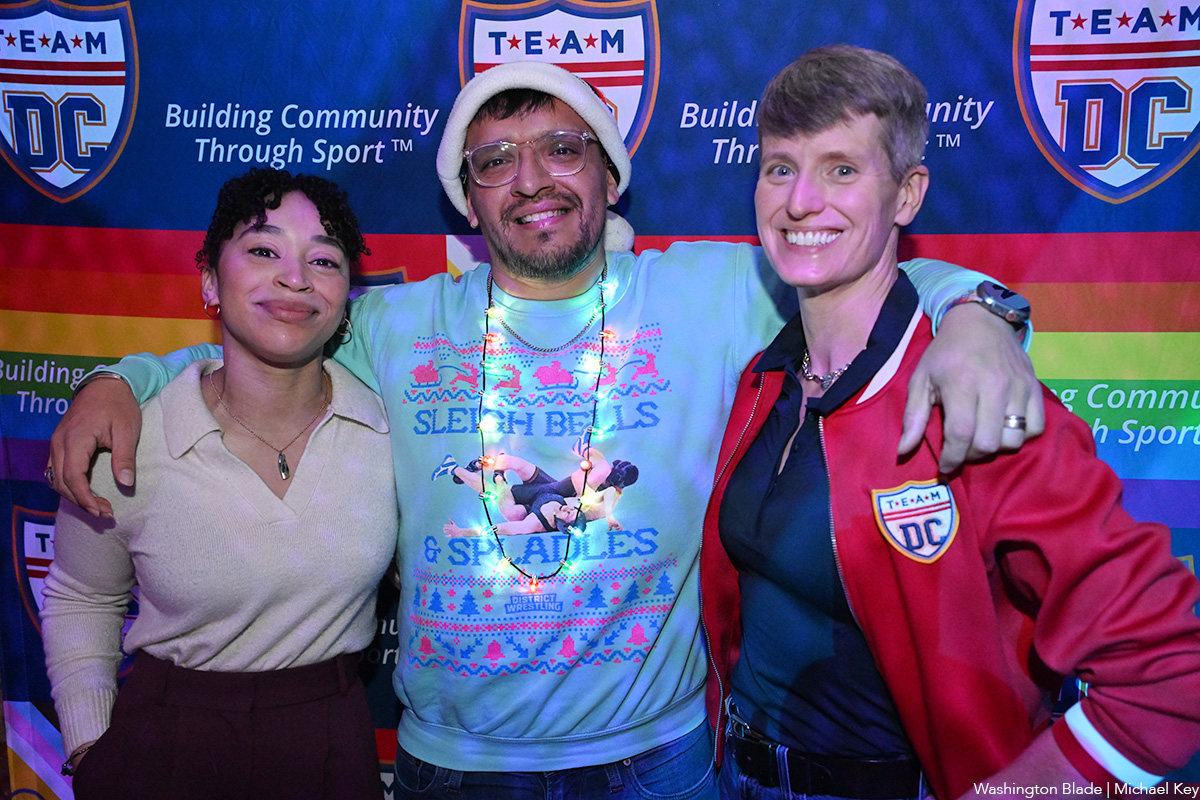
The umbrella LGBTQ sports organization Team DC held a holiday party at Trade on Monday, Dec. 8. Attendees brought clothes and coats for a clothing drive.
(Washington Blade photos by Michael Key)
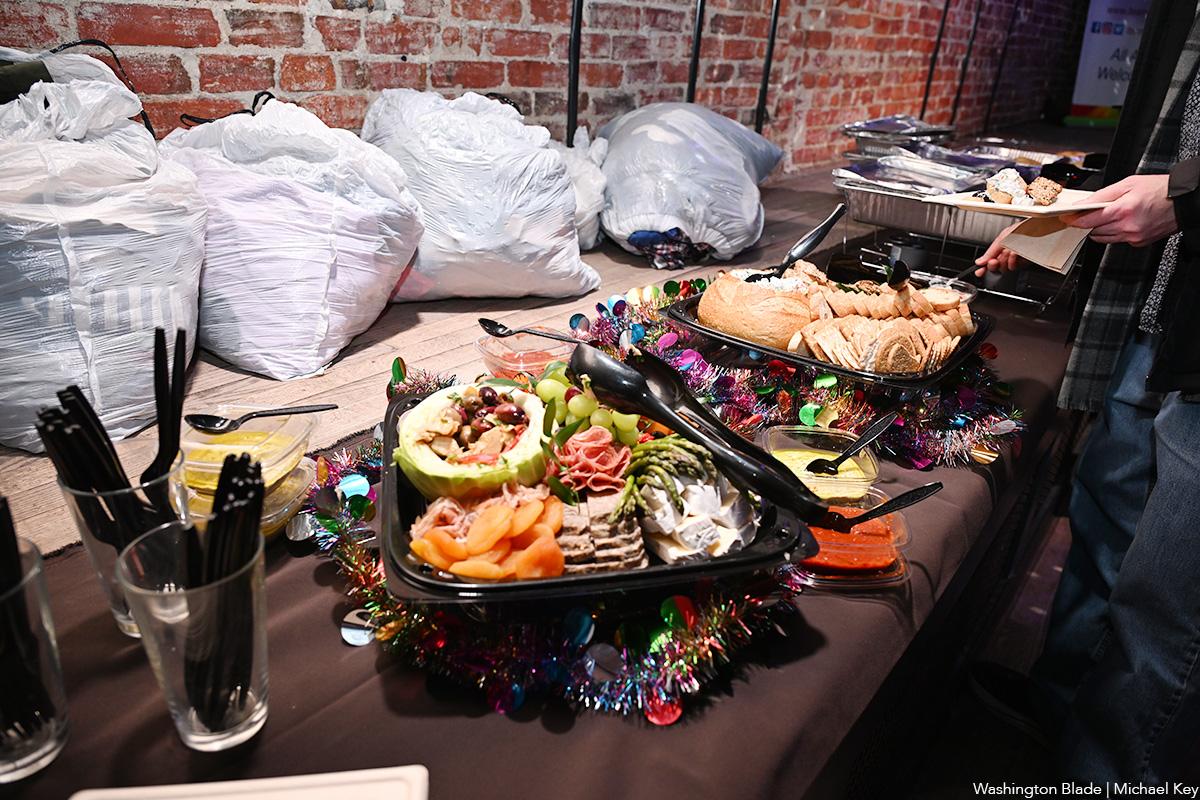
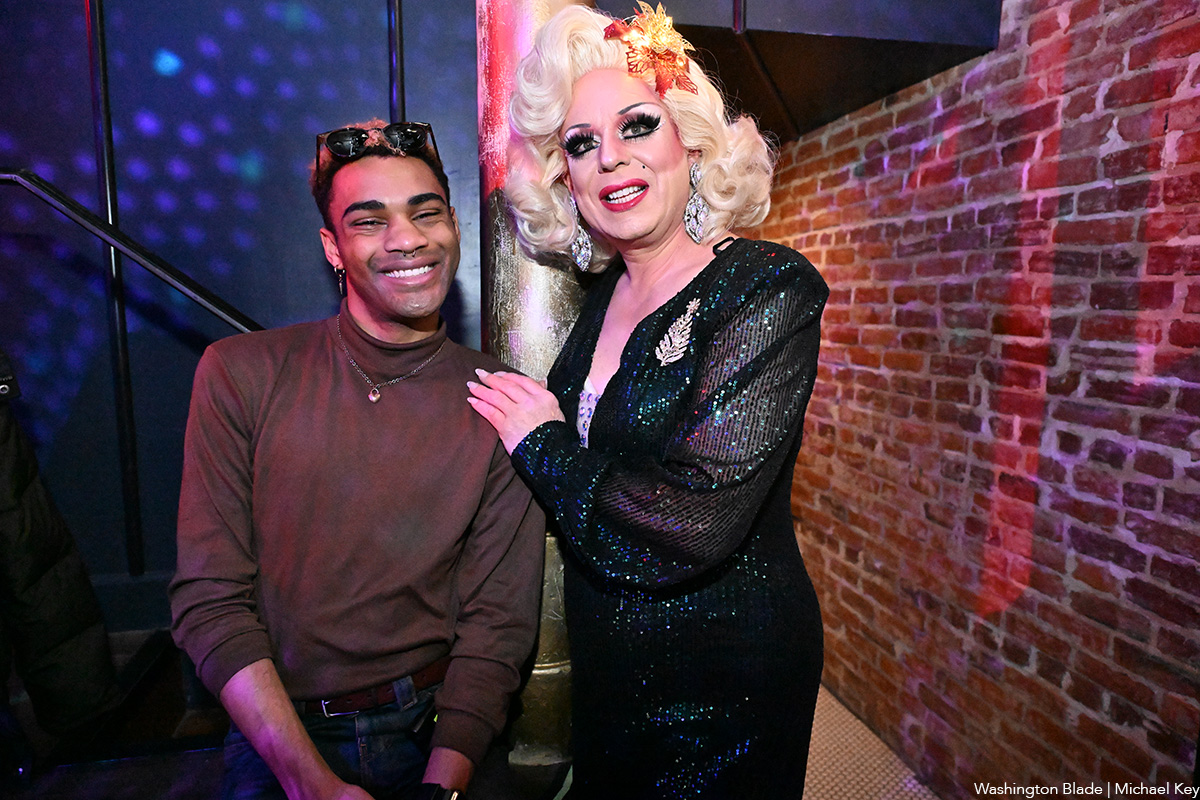
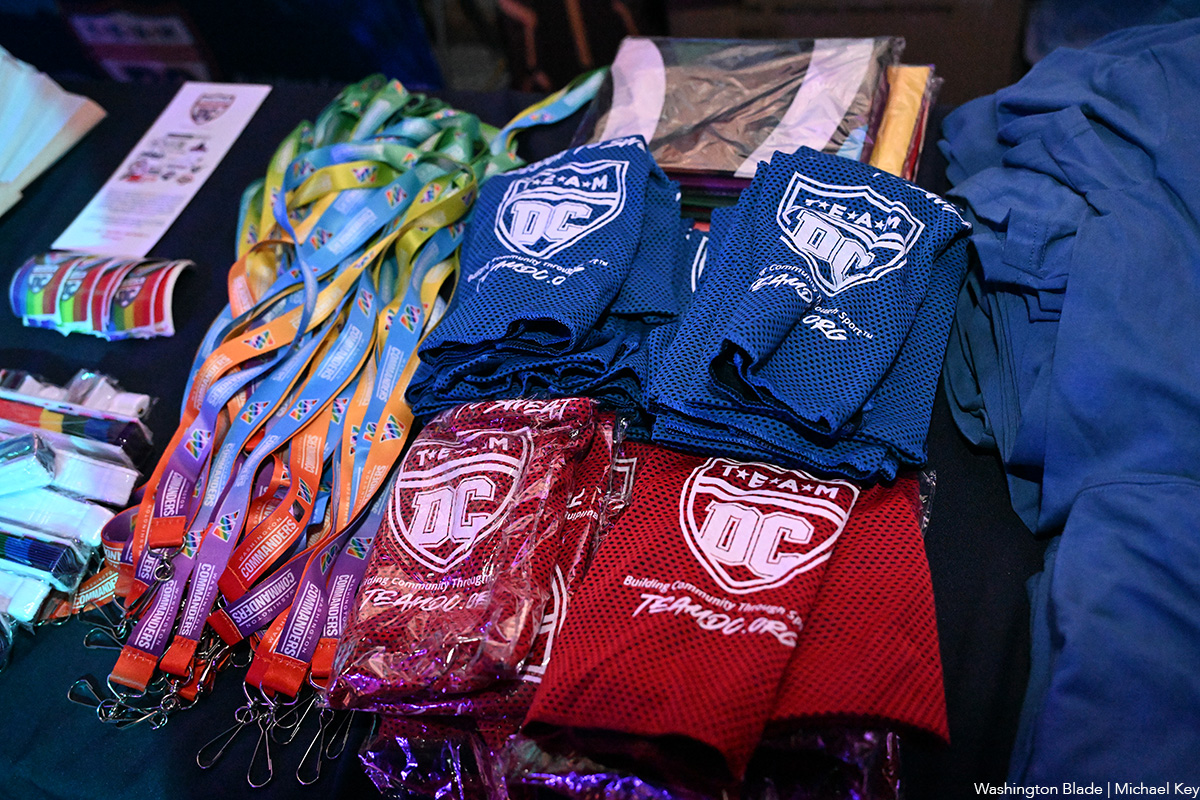
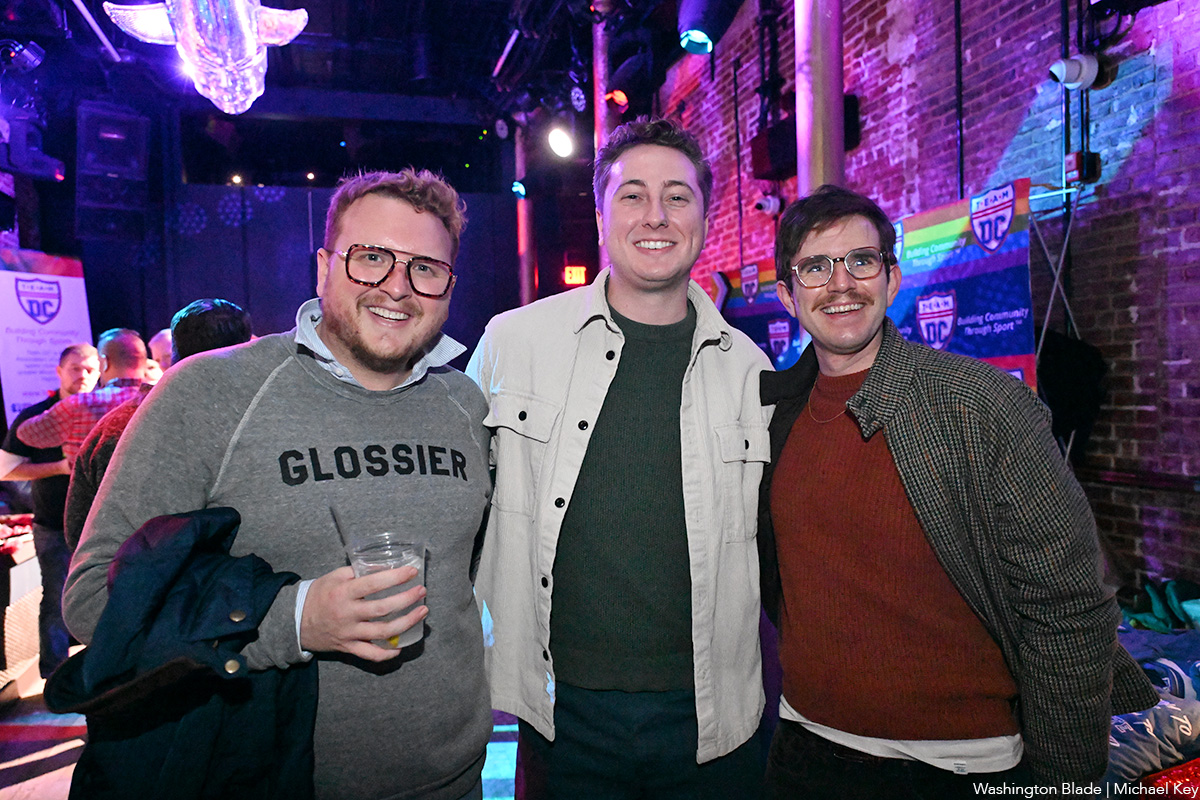
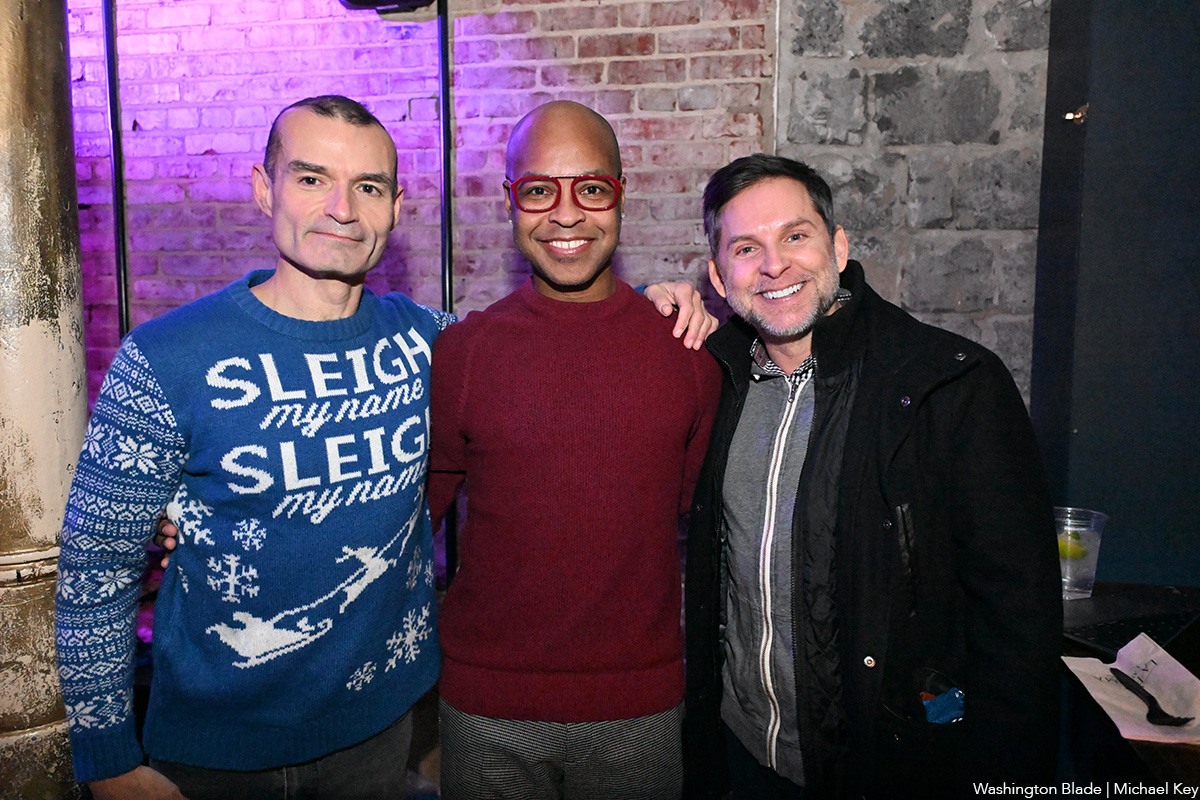
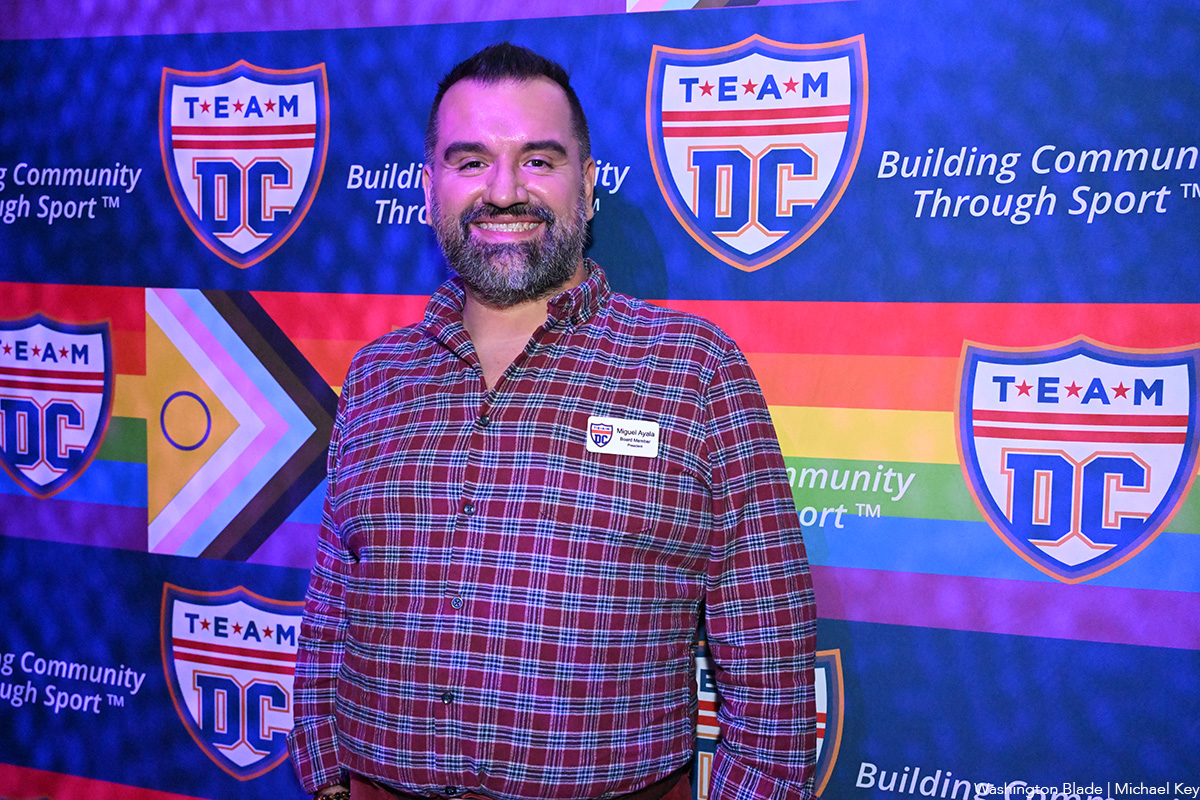


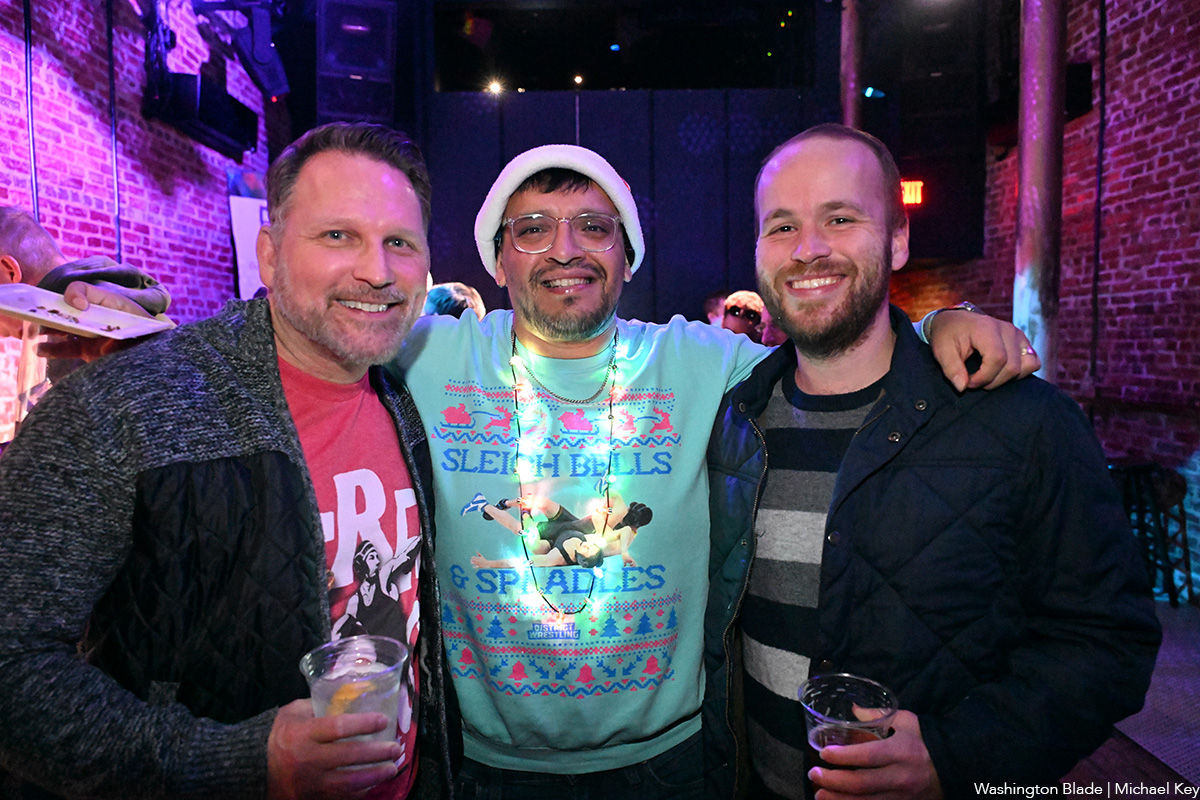
-

 The White House4 days ago
The White House4 days agoTrump’s shocking East Wing amputation—and the painful fallout Americans won’t ignore
-

 District of Columbia4 days ago
District of Columbia4 days agoThird LGBTQ candidate running for Ward 1 D.C. Council seat
-

 Health3 days ago
Health3 days agoThe harsh truth about HIV phobia in gay dating
-

 Arts & Entertainment4 days ago
Arts & Entertainment4 days agoCynthia Erivo, Eva Victor, and ‘Blue Moon’ bring queer representation to Golden Globe film nominations

















